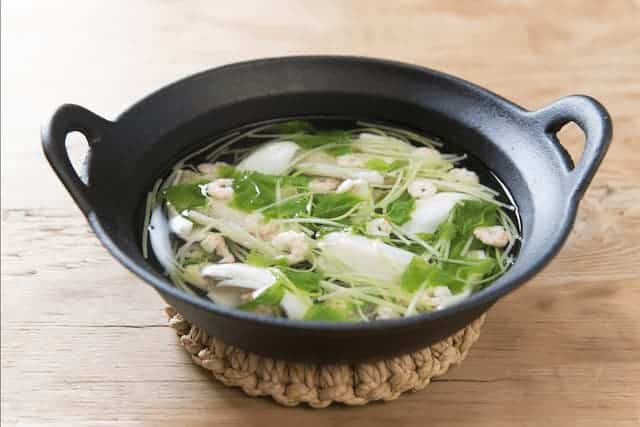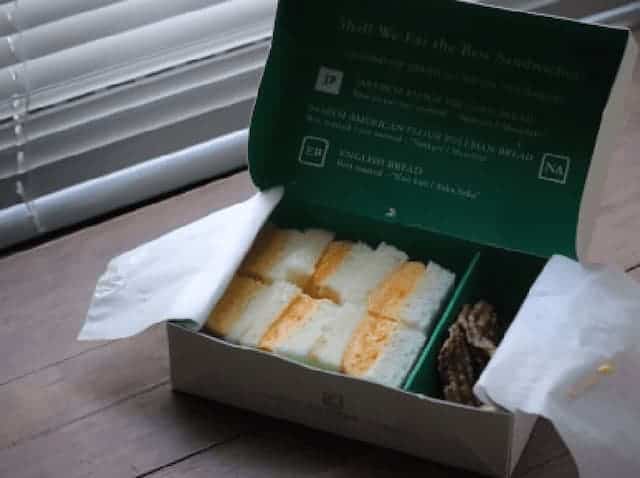Food in Tokyo: A Guide to the City’s Iconic Dishes and Restaurants

Speak of Japan, the mind of any traveler immediately turns to Tokyo. This bustling metropolis is often the first stop on many travelers’ itineraries, and for good reason. But beyond its iconic landmarks and vibrant nightlife, Tokyo’s culinary scene is a world unto itself, offering a unique blend of traditional and modern flavors that will satisfy even the most discerning palate. Today, we’ll delve into the characteristics of Tokyo’s food, explore its iconic dishes, and highlight the city’s most interesting restaurants, giving you a taste of what makes Tokyo’s food scene so unforgettable.
History of Tokyo’s Food Culture
Tokyo, the capital of Japan, has continued to develop and is now home to approximately 13 million people. Although it is the third smallest prefecture in Japan, Tokyo is characterized by its diverse geography, ranging from the Kanto mountain range to the east and west, the Tama Hills, the Musashino Plateau, the low-lying areas at sea level, and the Izu and Ogasawara islands.
The Edo Shogunate, established by Tokugawa Ieyasu in 1603, lasted for about 260 years. During this time, people from various regions of Japan visited Edo (the former name of Tokyo), and due to the country’s policy of isolation, Edo culture, including ukiyo-e, literature, and science, developed significantly. Within the flourishing bourgeois culture of Edo, food culture also made dramatic progress. In addition, the introduction of Western cuisine with the modernization of Japan further expanded Tokyo’s culinary repertoire.
Tokyo can be broadly divided into four areas: the Edo-mae/Shitamachi (downtown) area, which retains the atmosphere of old Edo; the Tama River basin and Okutama area, with its abundant nature; and the Izu Island area, which has its own unique culture.
Must-try dishes when visiting Tokyo
Tokyo offers a wide variety of delicious food that you should not miss. Here are some must-try dishes that will give you a taste of the city’s rich culinary culture.
Sushi


Sushi is a popular dish enjoyed by many people around the world. In Tokyo, you can find different styles of sushi, from nigiri sushi (slices of fish on vinegared rice) to chirashi sushi (scattered sushi). Originally, people made sushi by fermenting seafood with salt and rice, but did not eat the rice. Later, with the development of rice vinegar, sushi evolved into its current form. If you have a chance, try Edomae sushi, which uses fresh fish from Edo Bay.
All about the origin of Japanese Sushi here!
Soba


Soba is a type of noodle made from buckwheat flour. It became popular in the mid-Edo period as a form of fast food. Today, soba is one of Tokyo’s signature dishes. Enjoy the flavorful and aromatic noodles by slurping them, which enhances the taste and experience.
Monjayaki


Monjayaki is a savory pancake made by mixing ingredients into a loose wheat flour batter and grilling it on a hot plate. The fun part of eating monjayaki is cooking it yourself. In Tsukishima, you can visit Monja Street, where about 60 specialty shops offer unique versions of this dish. The origins of monjayaki date back to the late Edo period, when children used it to practice writing characters on an iron plate.
Click here to find best places to buy Monjayaki!
Fukugawa meshi


Fukagawa-meshi is a hearty dish made by simmering clams, scallions, tofu, and other ingredients in a miso or soy sauce broth, then serving it over rice. This dish originated in the Fukagawa area during the Edo period to feed busy fishermen. Some shops also offer a version called Fukagawa-meshi, which is made with clam rice.
How to make Fukugawa meshi? Click here!
Dojo-nabe and Yanagawa-nabe


Dojo-nabe is a hot pot dish in which loaches are cooked in broth with chopped green onions. Another variation, Yanagawa-nabe, features loaches cooked with burdock and topped with beaten eggs. Both dishes have been part of Japanese cuisine since the Edo period and offer a unique taste of traditional cooking.
Best places for Yanagawa nabe in Tokyo!
Chanko-nabe


Chanko-nabe is a nutritious hot pot essential for sumo wrestlers. It is filled with meat, fish, and vegetables. Many former sumo wrestlers run chanko specialty shops in Tokyo, so you can enjoy an authentic experience. This dish is perfect for anyone looking for a hearty and wholesome meal.
If you want to find out more about Chanko nabe, click here!
Recommended Restaurants in Tokyo
Edomae Shibahama (江戸前芝浜)


Edomae Bahama, located in Shibakoen, is a restaurant that has been serving traditional Edomae-style cuisine since 2016. In 2021, the restaurant changed its name to Edomae Shibahama and relocated. The restaurant’s owner, Haru, was inspired by his childhood experiences eating delicious shrimp from Shibakoen and incorporated it into his menu. The interior of the restaurant is designed to evoke the atmosphere of the Edo period, with a focus on traditional Edomae cuisine.
Monja Kura


You want your first experience to be in a popular shop? Then look no further than one of the most famous monja restaurants, Kura. With a rich menu, you can experience more than just Monjayaki here. Inexperienced hands can get help in using the table’s iron plate. Hence. their monjayaki is tasteful and satisfying. The menu outside can help you choose while your waiting too. Many people will say it is worth the wait.
Kotonofuji (Kagurazaka)


It is a small and cozy shop that stands quietly in the residential area of Kagurazaka. Kotonofuji, who was born in Hokkaido and was a sumo wrestler in the Sadogatake stable, opened this restuarant after he retired.
“Soppu Nabe” is a refreshing hot pot based on chicken meat with a reasonable price of 1500 yen per person. The name comes from the fact that a wrestler with a plump body is called an “anko type” and a wrestler with a muscular body is called a “soppu type”.
Sushi restaurant Shigeru (すし処志げる)


“Sushidokoro Shigeru” is a small, famous sushi restaurant with only 7 seats at the counter. Awarded the Bib Gukuman (less than 6,000 yen and more satisfying than the price) from Michelin, and its guaranteed excellent cost performance. For dinner, there is only the “Nigiri Set”(3,000 yen with 8 pieces of nigiri and a roll), and the “Omakase Course”, which is 6,000 yen.
Tokyo’s 2024 Hot Food Trends
Monochrome Sweets
Have you heard about the monochrome sweets taking Tokyo by storm? They’re absolutely gorgeous with their striking black and white color scheme, achieved using ingredients like black sesame, bamboo charcoal powder, and white cream. The trend is said to have evolved from Korea’s “2D sweets,” which feature desserts decorated with black and white lines to create a three-dimensional effect.
Where to Find Monochrome Sweets in Tokyo
BOOK AND BED TOKYO SHINJUKU


BOOK AND BED TOKYO SHINJUKU offers a unique concept that combines a bookstore with a cafe, creating a cozy and inviting space for book lovers and foodies alike. Located in the bustling Shinjuku district, this hybrid establishment has become a popular destination for those seeking a tranquil escape from the city’s hustle and bustle.
The cafe’s menu features a variety of eye-catching and delicious dishes, with a focus on their signature monochrome sweets. These Instagram-worthy creations are not only visually appealing with their striking black and white color scheme, but also bursting with fresh, flavorful ingredients. For those seeking savory options, the cafe also offers black bread sandwiches filled with chicken or egg.
BOOK AND BED TOKYO SHINJUKU’s popularity stems from its unique combination of a bookstore and cafe,providing a space where visitors can relax, read, and enjoy delicious food. The extensive collection of books, ranging from popular novels to niche magazines, caters to a wide range of interests
CAFE: MONOCHROME


CAFE: MONOCHROME is an amazing culinary destination in Tokyo! It offers a truly unique monochrome-themed experience that will delight your senses. From its striking black and white interior design to its innovative menu, MONOCHROME is a must-visit! The cafe’s minimalist aesthetic, featuring sleek lines and geometric shapes, creates a visually stunning backdrop for their culinary creations.
The menu at CAFE: MONOCHROME is a stunning testament to their creativity and ingenuity! From charcoal-infused lattes and black cocoa puddings to black lemon and passion fruit sodas, each dish is a visual masterpiece that pushes the boundaries of traditional cafe fare.
The cafe’s popularity is down to its unique blend of art and gastronomy – it’s a match made in heaven! The monochrome theme is not only visually striking but also serves as an amazing canvas for the chefs to experiment with flavors and textures. The result is an absolutely amazing menu that is both visually appealing and surprisingly delicious!
Artisan bread – CENTRE THE BAKERY


CENTRE THE BAKERY is a Tokyo haven for bread enthusiasts, specializing in shokupan, a Japanese milk bread that is absolutely to die for! It’s renowned for its pillowy softness and subtle sweetness. The bakery has become a beloved destination for locals and tourists alike, offering a truly unique and elevated bread experience.
What makes CENTRE THE BAKERY so special is its unwavering commitment to quality and craftsmanship. They use the best wheat from right here in Japan, and they bake it in the traditional way to create shokupan that is truly exceptional! Their commitment to preserving the bread’s natural moisture and texture is evident in their incredible “Centre Toast Set,” where diners are encouraged to enjoy the shokupan untoasted.
The bakery’s popularity stems from its incredible ability to transform a simple staple into a gourmet experience that’s out of this world! Their shokupan is so much more than just bread! It’s a canvas for creativity, with a wide range of toppings and accompaniments available to enhance its natural flavors.
And there’s more! CENTRE THE BAKERY also offers a selection of other baked goods, including delectable pastries and sandwiches. Their dedication to using the highest-quality ingredients and innovative baking methods has earned them a devoted following and a reputation as one of Tokyo’s premier bakeries.
GOOD CHEESE GOOD PIZZA


Get ready for a cheesy upgrade to Tokyo’s pizza scene in 2024, courtesy of GOOD CHEESE GOOD PIZZA! This trendy Italian eatery in Hibiya is putting a new spin on the classic pie by showcasing fresh, creamy burrata cheese as the star ingredient—and it’s absolutely delicious!
You simply have to try their amazing signature “Margherita Burrata”! The moment you slice into it, the luscious burrata spills out, creating an absolutely decadent, cheesy experience that goes way beyond the usual pizza toppings! For true cheese enthusiasts, they also offer a standalone “Freshly Made Burrata” dish that is absolutely to die for!
The restaurant’s bright and open atmosphere, complete with table and counter seating, makes it a welcoming spot for any occasion. Whether you’re on a casual date, enjoying a girls’ night out, or simply craving a delicious solo meal, GOOD CHEESE GOOD PIZZA is the place to be!
Takeaway
Tokyo is a food lover’s paradise. The city offers an incredible array of flavors and culinary experiences to suit every taste. From street food stalls to high-end restaurants, Tokyo’s food scene is vibrant and diverse. You can find everything from traditional Japanese dishes to innovative fusion cuisine. If you have time, explore the recommended restaurants and enjoy the best the city has to offer. Tokyo’s food not only pleases the palate, but also tells the story of its rich cultural heritage. Be sure to indulge in this unforgettable food journey when you visit Tokyo!
For more Food in Tokyo, find out here!













Comments